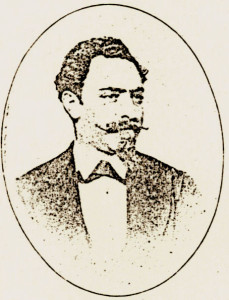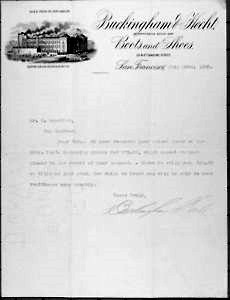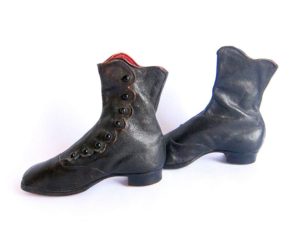Isaac Hecht
Value Codes I – H – E – L – P
Isaac Hecht was born in Hamstadt, Grand Duchy of Baden, Germany, in 1832.
At the age of 16, along with his parents, brothers and sisters, he immigrated by way of London to New York City.
Along the way
The family proceeded to Baltimore, Maryland, where Isaac found a job that allowed his younger brothers to finish their education.
From Baltimore, Isaac Hecht moved to Dubuque, Iowa, for a short time before continuing West to San Francisco.
San Francisco
Some of Isaac Hecht’s brothers soon followed him to San Francisco, and together they formed Hecht Bros. & Co, manufacturing shoes and boots.
Eventually, all five brothers settled in the city. All were made partners in the firm.
After a few successful years, the firm merged with Thomas Buckingham and became Buckingham & Hecht.
Community
Issac Hecht served as president of the German Hospital.
Hecht was an early member of Congregation Emanu-El.
Family
In 1862, Isaac Hecht married Blemma Rosewald.
Together, they had five children: Helen, Bert, Mrs. William Fries, Summit, and Mrs. Irvin Wiel.
Isaac Hecht died in 1895.
“He was a man of high principles and great sympathies. As a member of the various Jewish organizations, although of a very retiring nature, he accomplished much real good among his fellow men. Anything along educational lines appealed to him, and being a great reader, he developed unusual intelligence.”
— Rabbi Martin Meyer, 1916
Source
- Martin A. Meyer, The Jews of San Francisco (San Francisco: Emanu-El, 1916).
David Epstein is curator of this Isaac Hecht exhibit.
======================================
Jews in the News
–About This Time–
Fast Passage — 1860
Had anyone foretold our forefathers a hundred years ago, that a passage from Europe to California can be consummated in thirty days, the man would be thought a dreamer. But such is feasible now. There arrived by the last steamer a young man, whose actual, passage from Havre [France] to San Francisco did not take him more than thirty days.
—The Weekly Gleaner, San Francisco, January 13, 1860 [WSJH 20/3]
======================================



